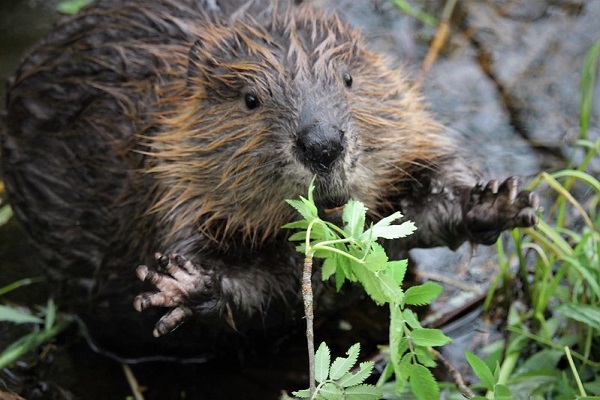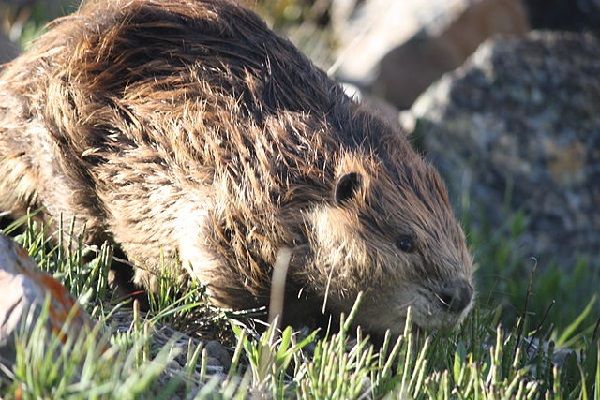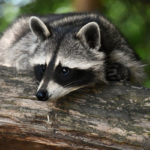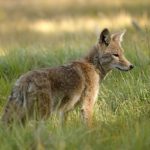
- Brian Moss (President)
- AAAC Wildlife Removal
11/28/2022 Total words : 1831
What is The Biggest Threat to Beavers?
It's not what you might think! The biggest threat to beavers is not hunters or trappers, although they pose a significant threat. The biggest danger to beavers is habitat loss, fragmentation, and natural predators! Beavers (Castor canadensis) are creatures of habit and need a lot of space to roam and build a beaver lodge or dam. But as human populations grow and development encroaches on their habitat, beavers are finding it harder and harder to find the space they need. This makes it difficult for them to find mates, build dams, and raise their young. Various factors affect the lessening beaver population. But we'll be diving deeper into their biggest threats for now! The biggest threat to beavers In North America, beavers were once found in nearly every watershed. Today, their range has been reduced by about half, and they've been extirpated from more than 60% of their former range in the contiguous United States. Fragmentation happens when a large land area divides into smaller pieces, like a puzzle. When this happens, it creates pockets of habitat that are too small to support beaver populations. This makes it difficult for beavers to find mates and care for their young. Habitat loss is another big problem for beaver colonies. As humans develop land for housing, farming, and industry, beavers deal with fewer and fewer places to live. In addition, many beaver lodges get destroyed because they pose flooding to nearby homes and businesses. The other threats to beavers Beavers are not safe from the realities of the wild. Beavers face threats from natural predators, where they are killed for food or out of mere curiosity by other animals. In some areas, beavers are hunted and trapped for their fur. This is a significant threat to beaver populations, particularly in areas where the animals are already struggling to survive. Here are the natural predators of beavers: Red foxes Red foxes are the most common predator of beavers. They are the most prominent members of the Carnivora order and the largest species of true foxes. Aside from being present throughout North America, Europe, Asia, and Australia, these fierce foxes also dwell in small portions of North Africa. They typically hunt in pairs and eat anything they can catch, including beavers. They're known to use the power of their vision, smell, and hearing. Their sharp eyesight and sensitive hearing are enough to spot a hiding rabbit or beaver quickly. Lynx Lynx are wild cats found in North America, Europe, and Asia. They typically hunt alone and prefer to eat small animals, like rabbits and beavers. The lynx is known to hunt unfortunate prey, religiously walking, chasing, and flushing. They are experts at hiding while they prepare to launch their attack on other small mammals. The most notable feature of a lynx is the tufts on its ear. It serves as a hearing aid to help the animal detect the sound of its prey. Wolves Wolves are the most prominent canine family members native to Eurasia and North America. They live in packs and hunt in groups and will eat anything they can catch, including beavers. Wolves have an acute sense of smell and hearing, which helps them locate their prey. They also have sharp eyesight, which allows them to see in low-light conditions. Wolves and beavers usually encounter each other in areas where their habitat overlaps. These are in areas where food and water are abundant. Bears Bears are large carnivoran mammals that belong to the Ursidae family. They are typically shy and reclusive but will eat anything they can catch, including beavers. There are only 8 species of bear that remain in existence. However, their numbers are abundant and appear in several habitat varieties. They are found throughout the Northern Hemisphere and only partially in the Southern Hemisphere. The most significant difference between bears and other predators is that they are plantigrade. This means they walk on the whole of their feet, not just their toes like most animals. Coyote The coyote is a canine that is native to North America. They look like their close cousins, the wolves. But don't get confused! These canines are specifically smaller than them. Their diet consists of small mammals, including beavers. They typically live and hunt alone but will form packs when necessary. These animals can roam in neighborhoods too! They may rummage through trash cans to pursue the smell that caught their attention. The coyote has acute senses that help it survive in the wild. It has an excellent understanding of smell, hearing, and eyesight. This allows the animal to locate its prey quickly and avoid being caught by predators. Bobcat Bobcats are also known as the red lynx. They are medium-sized cats that are native to North America. Like other felines, they are obligate carnivores, which means their diet revolves around meat. Bobcats are solitary hunters and are primarily nocturnal and elusive creatures. This helps them avoid being seen by their prey. Their favorite prey includes rabbits, rodents, and reptiles. But in a pinch, they will also eat rabbits, beavers, and other rodents. They have sharp vision and hearing, which allows them to see and hear their prey from a distance. They also have a keen sense of smell, which helps them locate their prey. Cougars Cougars are also known as mountain lions, panthers, and pumas. They are large cats native to and exist throughout Canada and South America and are widespread in the western hemisphere. Cougars are very good in ambush. Their strategy is to stalk their prey and attack it when unaware. Cougars hunt alone and typically kill animals that are smaller or slightly larger than them, such as deer, elk, moose, and beavers. While they are fierce and brave, they are not considered apex predators. This means that they are not at the top of the food chain and can be preyed upon by other animals. Fisher Fishers are small mammals native to North America and the boreal forests of Canada. They are members of the Mustelid family and closely related to the marten. Fishers look a bit like bears, but they have more slender and longer bodies. They are exciting predators because they have retractable claws, similar to cats. Contrary to their thin bodies, fishers have short legs. They have large, rounded ears close to their heads, and they have sharp, powerful fangs. These predators typically hunt alone and are proficient climbers. These animals love small to mid-sized mammals, including squirrels, mice, snowshoe hares, mountain beavers, and birds. Dogs Unexpectedly, dogs become harsh and curious animals too! Dogs are canines that humans have domesticated. They come in all shapes and sizes, from the tiny Chihuahua to the massive St. Bernard. Dogs have a wide range of diets depending on their size, activity level, and health condition. However, all dogs are carnivores and need meat to survive. While most dogs are not wild animals, some live in the wild. These include feral dogs, stray dogs, and wild dogs. Wild dogs have never been domesticated and live in the wild. Feral dogs are domestic dogs that have been abandoned or have run away from home and have returned to a wild state. Stray dogs are domestic dogs that have been lost or abandoned and live independently. Beaver Facts For You! Beaver facts have quite a record of environmental benefits. For one, beaver dams help control floods by slowing the flow of water and improving water quality. They also create wetlands home to many different animals, including fish, amphibians, reptiles, birds, and mammals. Did you know… that the beaver colony is ecosystem engineers? Beavers also help reduce erosion and restore wetland habitat. This is achieved when they build dams and create ponds. A beaver dam slows water flow, and the ponds act as a buffer between the water and the land. Scientists also report that preserving their habitats aids in the effects of climate change. With the rising temperature, heatwaves, decreasing water levels, and droughts becoming more frequent, their habitats improve the fire resistance of landscapes. Despite these benefits, these beings fall ill at the hands of humans. They are hunted for their coats, commonly referred to as beaver pelts. Beavers were abundant when they first started to settle North America. But the fur trade in European countries has nearly caused the beaver family's extinction. Good thing they're now of least concern due to reintroduction and protection efforts. Other beavers are also killed because they damage crops and property. In some cases, beavers are even seen as a nuisance and are killed for sport. Need Help With Beaver On Your Property? If you notice beaver destruction activities on your property, it is always best to contact AAAC Wildlife Removal. They will be able to assess the situation and provide you with the best course of action. We offer beaver control services in effectively removing beavers from your property. Contact us today to learn more! Conclusion The biggest threat to beavers is fragmentation and habitat loss. This is because beavers require large tracts of land to build beaver ponds and lodges. When their wildlife habitat is fragmented, it limits their ability to build these structures, leading to a decline in their population. Fragmentation can also lead to increased predation by animals such as bobcats, cougars, fishers, and dogs. Their fragmented habitats allow these predators to surprise and attack beavers. To learn more about the biggest threat to beavers, click here: biggest threat to beavers. If you're concerned about the conservation and well-being of beavers or facing issues with wildlife on your property, AAAC Wildlife Removal is here to assist. Our team of professionals can provide expert guidance and services to help mitigate conflicts and promote the coexistence of wildlife and humans. FAQs What do beavers look like? Beavers are large, furry animals with short, stout tails. They have webbed hind feet and large front teeth for cutting down trees. How many kits can beavers have? Beavers typically have two to four baby beavers per litter after their mating season from January to March. What do beavers eat? Beavers are herbivores whose diet consists of bark, twigs, leaves, and other vegetation. And since they're semiaquatic, they also get to eat aquatic plants. Beavers also gnaw on wood or trees and clip branches from falling logs. Can you deceive a beaver? Beavers are not always good companions. They can become a nuisance when building dams in or near culverts. In this situation, a beaver deceiver can be effective. These devices are like a cage made of wires. They prevent dam building on brooks, rivers, or streams. Can beavers carry diseases? Yes, beavers are capable of carrying a parasite, infection, or disease. The common ones are rabies, giardia, and E. coli. These can be passed on to humans and other animals, causing mild to severe conditions and even death. Beavers can cause human injury too. So make sure you don't threaten them and invade their territories.
What Is the Biggest Beaver Ever Recorded?
Beavers are the largest rodents in North America, while they have the title of the second-largest in South America. Beavers are large and semi-aquatic. They belong to the genus Castor and are native to the Northern Hemisphere. Currently, there are only two species of beavers remaining. They're the North American Beaver (Castor canadensis) and the Eurasian beaver (Castor fiber). This is after the bear-sized Giant Beavers species fell into extinction. Let's discover the biggest beaver ever found! Which is the biggest beaver ever recorded? The biggest beaver ever recorded was found in North America and weighed 110 pounds. This beaver is twice as large as the average beaver size! It was caught in Iron County in 1921 but was originally from Wisconsin, United States. The beaver has a large, flat tail and webbed hind feet. Their front feet are sharp and dexterous and appear similar to a kitten's. Beavers use their tails for balance when standing on their hind legs. How long is the longest beaver record? The longest beaver on record also belonged to the biggest beaver on record. It measured over 5 feet long from its nose to its tail. Size, weight, and length greatly influence each other. Hence, there's no wonder how the biggest beaver also had the best length. Did you also know that there is a slight difference between a giant beaver and a modern beaver? It was found that modern beavers have a proportionally smaller brain size, while the giant beavers' were bigger! The giant beavers only got to live during the Ice Age. Records and fossils were found on Indian Island, Toronto, Ontario, and other parts of Canada. Fossils also appear in the Crow region. How big can a beaver get? Beavers can grow to be very large creatures! They don't stop their growth process. The average beaver weighs about 35 pounds and is approximately 3-4 feet long. This will depend on the species, though. The North American beaver can measure 23 to 39 inches, about 60 to 100 centimeters. This is their body alone. When you measure their tail, it adds another 8 to 12 inches. On the other hand, the Eurasian beaver can measure as long as 29 to 53 inches or 73 to 135 centimeters long. What is the average size and height of a beaver? The average size of adult beavers would depend on the species. The North American beaver can weigh between 11 and 32 kg or 25 to 70 pounds. Meanwhile, the Eurasian beaver can weigh 18 to 55 kg or 40 to 120 pounds. When it comes to height, both are usually around 1 to 1.5 feet tall. Beavers love to eat bark, twigs, leaves, and the cambium layer of tree trunks. However, their favorites are aspen and willow trees. When they eat these, it helps them maintain their sharp teeth. Otherwise, their teeth will grow too long, which might become a problem when they try to eat food. What is the size of a beaver's tail? An adult beaver's tail is usually between 8 and 12 inches or 20 to 30 centimeters long. Their tails are broad, flat, and scaly. Beavers use their tails for balance when standing on their hind legs. But, the most notable role of their feet is to help them swim faster. They also use this as an alarm by slapping it against the water. How Big Do Male Beavers Get? Male beavers are usually larger than their female counterparts. When it comes to height, males are generally around 1 to 1.5 feet tall. The average male beaver weighs between 16 and 32 kg or 35 to 70 pounds. Male beavers also have larger front teeth than females. This is one of the ways you can tell them apart. Together with female beavers, they create dams and lodges using their large teeth. What is the size of a female beaver? Female beavers are usually smaller than their male counterparts. When it comes to height, females are generally around 0.8 to 1.4 feet tall. At the same time, the average female beaver weighs between 11 and 27 kg or 25 to 60 pounds. Female beavers love to build beaver dams near streams and rivers. They also like to live in areas where there are a lot of trees. These provide them with the necessary resources to build their homes and dams. What size are Beaver Kits? Beaver kits are the babies of beavers. They're born blind, deaf, and toothless. They're born with a thin layer of fur that keeps them warm and dry. A beaver kit weighs about 0.5 pounds or 220 grams at birth. Kits grow quickly and can weigh up to 4 pounds or 1.8 kilograms after just two months. At six months, they're already the size of an adult beaver. Beaver kits stay with their parents for the first two years of their lives. After that, they go off and build their own homes. More Beaver Knowledge Did you know... that beavers can stay underwater for 15 minutes? Yes, you read it right! Beavers can hold their breath for that long. Did you know... that beavers are the only animals with the nature to modify their home? Beavers are known for their dam-building activities. But did you know that they don't build dams out of spite? They do it for two reasons: to protect themselves from predators and to provide a home for their offspring. Their dedication to picking up twigs and branches results in the installation of a beaver dam site or beaver lodge. It's usually situated in a river, pond, or creek. During this time, they might also take this opportunity to eat. They peel off, cut, drag small parts of branches, and gnaw on them to keep their incisors sharp. The beaver family has a pair of castor sacs and castor glands. When beavers want to mark their territory, they leave their scent on things like trees and rocks. But they don't use urine like other animals. Instead, they secrete a substance called castoreum (produced by castor sacs). Need Help With Beaver Problem on Your Property? If you have beavers on your property, you need to call AAAC Wildlife Removal. Do not attempt to remove them yourself, as this could be dangerous. AAAC Wildlife Removal can determine the best course of action to take. We will also have the necessary equipment to safely and humanely remove the beavers from your property. Summary There are only two remaining species of beaver. They are the North American and Eurasian beavers. The biggest beaver, being 110 pounds, was already a huge shocker. But, knowing that they continue even puts them in an interesting spot. We might not know there's already a beaver out there that's bound to replace the title of the beaver found in 1921 in Wisconsin. Beavers remain to be exciting creatures because of their dam-building habits. It's something that they do to protect themselves from predators and also to provide a home for their offspring. So, if you ever see beavers carrying twigs in their hands, they're probably building their dam site! To learn more about the largest recorded beaver and the threats they face, click here: largest recorded beaver. Contact us if you have concerns about beavers or any other wildlife issues on your property. Our team is experienced in wildlife management and can provide effective solutions to address the situation. FAQs When do beavers mate? Reproduction season can occur in different months depending on their regions. Beavers in the northern hemisphere generally mate between January and March, then birth their young in spring. While those in the southern hemisphere breed between late November and December. What are the natural predators of beavers? The natural predators of beavers are coyotes, wolves, bears, alligators, and eagles. Where do beavers live? The environment in which beavers live is also where they build their dam sites. They live in streams, marshes, ponds, lakes, and creeks.

- Brian Moss (President)
- AAAC Wildlife Removal
11/28/2022
Total words : 1280

- Brian Moss (President)
- AAAC Wildlife Removal
11/28/2022 Total words : 1280
What Is the Biggest Beaver Ever Recorded?
Beavers are the largest rodents in North America, while they have the title of the second-largest in South America. Beavers are large and semi-aquatic. They belong to the genus Castor and are native to the Northern Hemisphere. Currently, there are only two species of beavers remaining. They're the North American…














